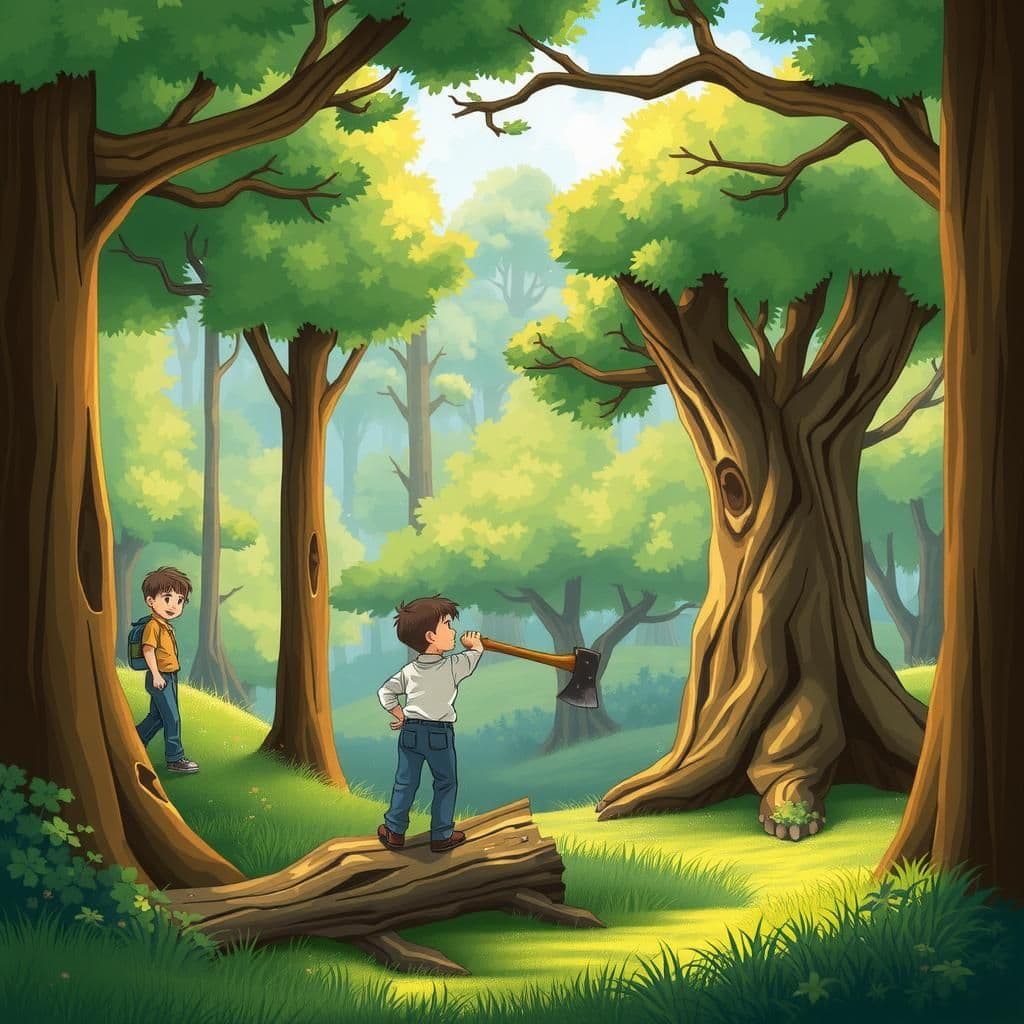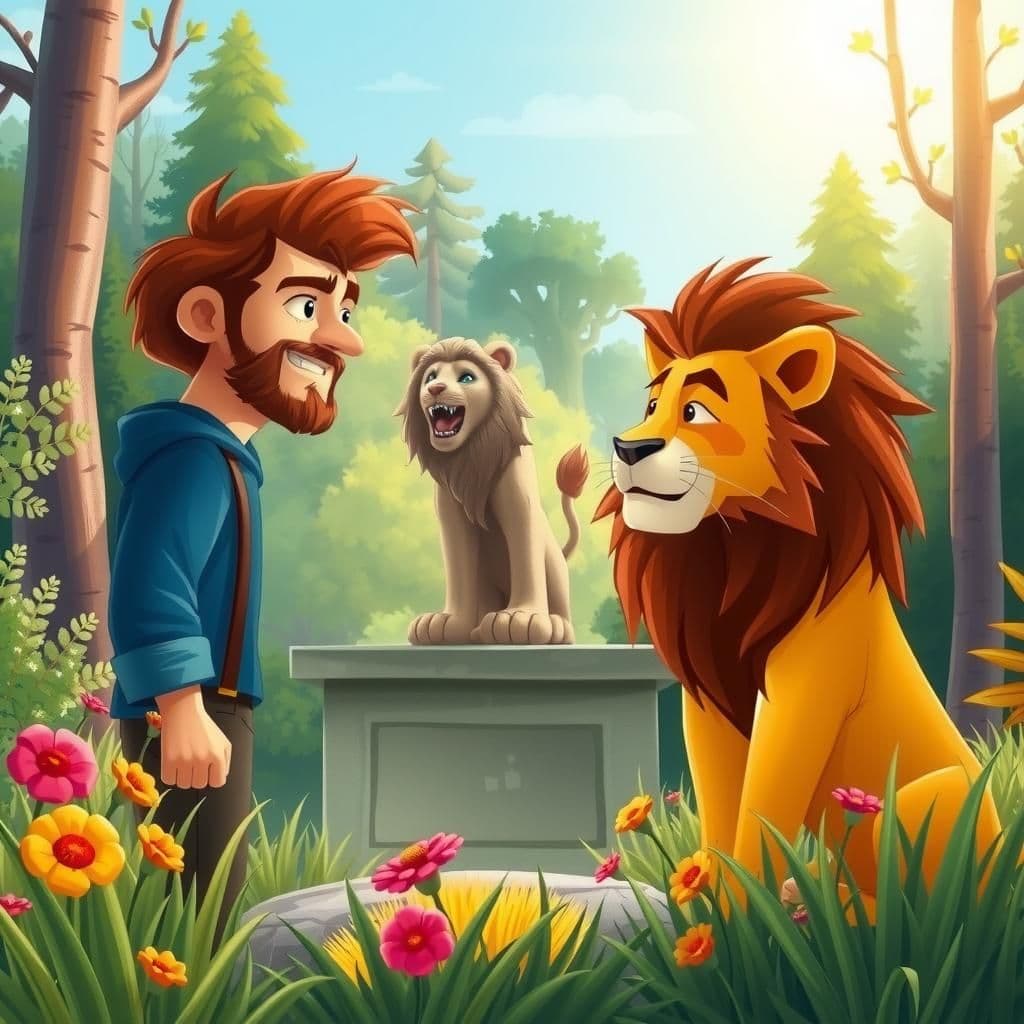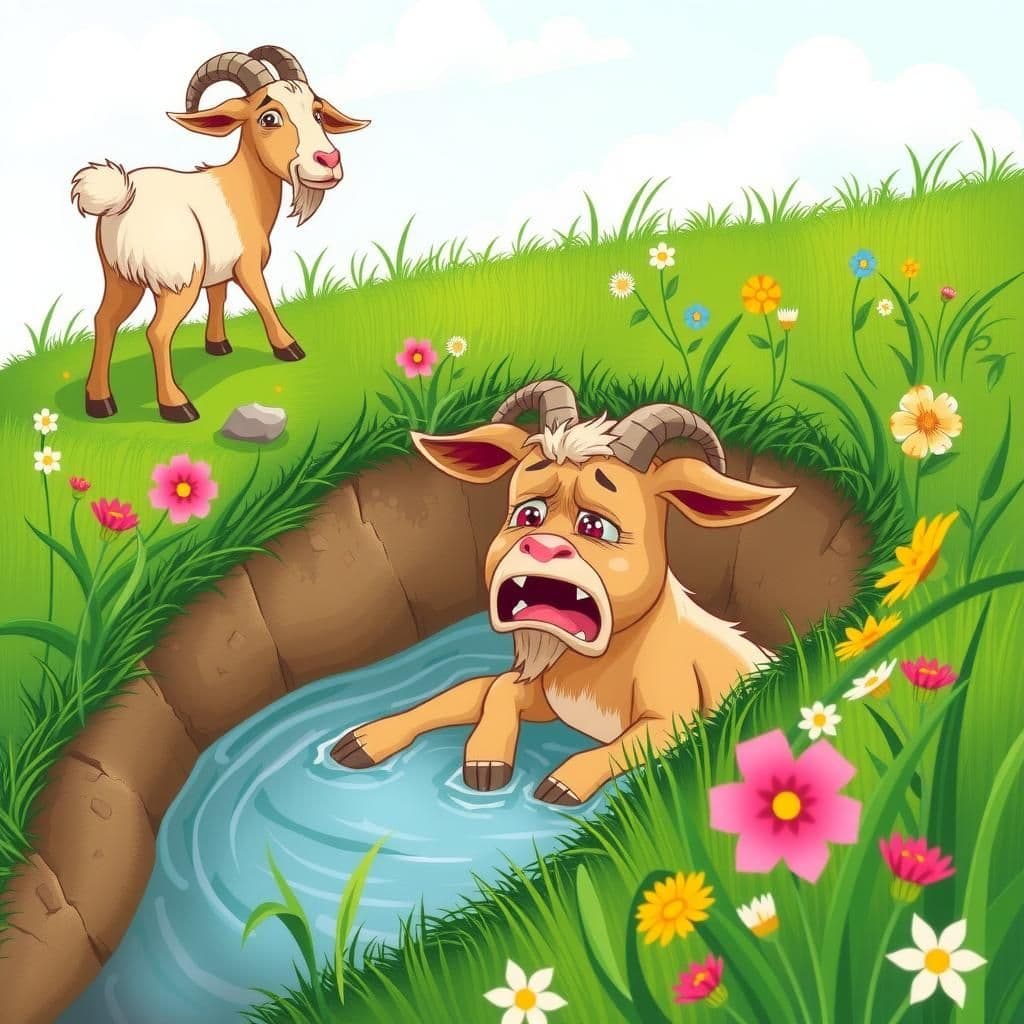The Trees and the Axe

Story Summary
In "The Trees and the Axe," a man humorously asks the Trees for a young ash-tree to create a handle for his axe, which they willingly sacrifice. However, as he swiftly cuts down the forest's strongest giants, an old oak laments that their consent has led to their own demise, illustrating a powerful moral about the consequences of sacrificing one for the many. This short moral story serves as a poignant reminder for personal growth, emphasizing the importance of protecting one's rights to ensure collective survival.
Click to reveal the moral of the story
The moral of the story is that compromising one's own safety or rights can lead to greater losses for the entire community.
Historical Context
This tale reflects themes of betrayal and the consequences of misplaced trust, reminiscent of Aesop's fables, which often convey moral lessons through anthropomorphized animals and plants. It echoes the broader cultural narrative found in folklore, where nature embodies wisdom and warns against the folly of greed and short-sightedness, suggesting that yielding to temptations can lead to collective downfall. Variations of similar stories can be found in many cultures, emphasizing the timelessness of their moral implications.
Our Editors Opinion
This fable serves as a reminder of the dangers of compromising our values for short-term gains, as it can lead to greater losses down the line. In modern life, this is reflected in scenarios such as companies prioritizing profits over environmental sustainability; for instance, a corporation might choose to cut down a forest for timber, ignoring the long-term environmental impact and loss of biodiversity, ultimately harming not just the ecosystem, but their own future viability.
You May Also Like

The Man and the Lion
A man and a lion boast about their superiority while traveling together, leading to a dispute that reflects the themes found in famous moral stories. When they encounter a statue depicting a lion being strangled by a man, the man claims it showcases human strength, but the lion counters that it represents a biased perspective, suggesting that if lions could create statues, the roles would be reversed. This very short moral story illustrates that the lessons learned from stories can vary greatly depending on the storyteller's viewpoint.

The Horse and the Stag
In this heartwarming moral story, the Horse, once the sole ruler of the plain, seeks revenge on a Stag that intrudes into his pasture. Enlisting the help of a man who promises to aid him, the Horse ultimately finds himself enslaved to the very human he sought to empower, illustrating a powerful lesson about the consequences of vengeance and the importance of freedom. This tale serves as a poignant reminder of the lessons from moral stories that resonate in childhood stories with moral lessons.

The Goat and the Ass
In "The Goat and the Ass," a story often shared as a childhood tale with moral lessons, a Goat envies the Ass for its better food and persuades it to pretend to be ill to escape hard labor. The Ass follows this misguided advice, injuring itself in a ditch, which ultimately leads to the Goat being killed to treat the Ass's wounds. This culturally significant moral story illustrates the dangers of envy and the consequences of poor decisions, making it a valuable lesson for kids and students alike.
Other names for this story
"Fall of the Forest, Axe and Ash, Betrayed by the Trees, The Price of Trust, Silent Giants, The Ashen Handle, Woodland Wisdom, The Cost of Betrayal"
Did You Know?
This story illustrates the theme of self-sabotage, where the Trees' willingness to sacrifice one of their own for a seemingly harmless request ultimately leads to their own demise, highlighting the dangers of complacency and the importance of protecting one's community and values.
Subscribe to Daily Stories
Get a new moral story in your inbox every day.